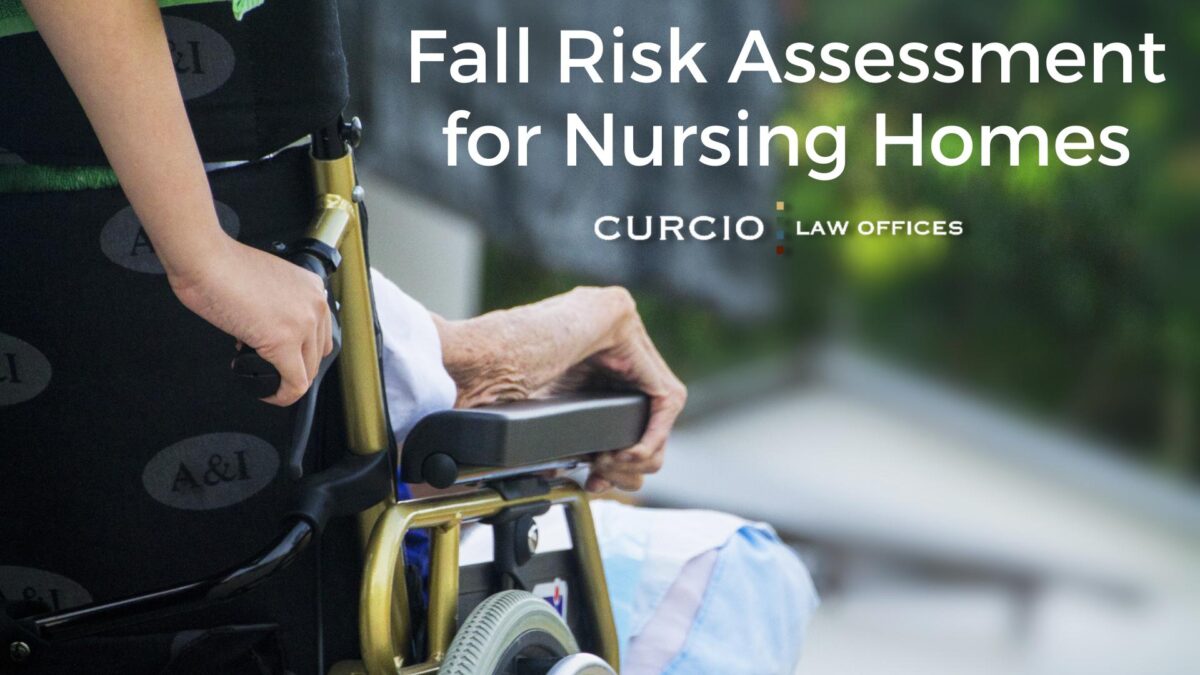Older adults are at a high risk of suffering from severe fall-related injuries. As we age, our reflexes and other mobility functions decrease, which leads to problems balancing, causing a higher risk for falls. Unfortunately, falls are a leading cause of injury and death in older adults. According to the Centers for Disease Control and Prevention, 36,000 adults over 65 died from falling injuries in 2020.
It’s important to have individuals 65 years or older undergo a fall risk assessment screening to evaluate their risk of falling. Once this is determined, healthcare providers can reduce fall risk by implementing fall prevention techniques. However, older adults are still at risk for falls even when living in a nursing home despite being surrounded by medical personnel and assistive devices. Many nursing homes are understaffed, leading to patients being unsupervised or not being provided with proper falls prevention tools, like grab bars or walkers, or they may fail to perform a fall risk assessment.
When your loved one has been seriously injured due to a fall at a nursing home, you have the right to pursue legal action against that facility. Nursing home abuse and neglect attorneys at Curcio & Casciato have the knowledge and experience necessary to fight for maximum compensation for your elderly loved one’s fall injuries, especially if negligence played a significant role. To discuss your nursing home case with one of our experienced attorneys, call 312-321-1111 to schedule a free consultation today.
What is a Fall Risk Assessment?
A fall risk assessment is a medical tool used to measure a person’s risk of falling. This risk assessment is usually used for older adults and performed by a medical professional using a variety of tests. These tests include measuring vision and evaluating current medications to see if any cause side effects, such as dizziness. Once complete, the health care provider can create fall prevention techniques for the elderly patient so they can avoid serious injury.
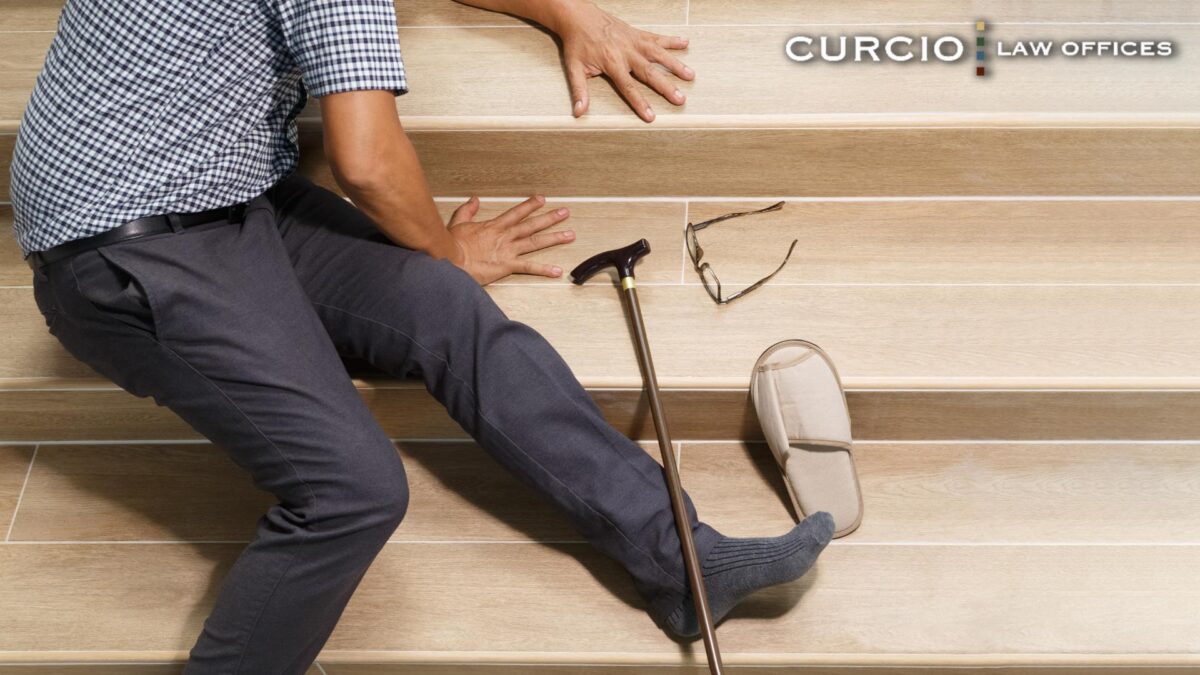
Why Do Healthcare Professionals Use Fall Risk Assessments?
Health care providers use fall risk assessment screening to determine a patient’s risk of falling. By performing a fall risk assessment, they can rate the patient’s level of falling by low risk, moderate risk, or high risk. If the patient is determined to be high risk, they can create strategies for managing fall risk and reducing fall-related injuries.
The American Geriatrics Society and the CDC both recommend that people over the age of 65 should have fall risk assessment checks every year. In fact, the CDC created the STEADI initiative to help healthcare providers reduce older patients’ risks of falling. STEADI – Stopping Elderly Accidents, Death, and Injuries – includes many fall risk assessment tools that can help the medical community better care for patients who have an increased risk of falling.
Once health care providers evaluate the likelihood of a person falling, they can implement fall risk management techniques, like balance training, to prevent future falls.
What Kind of Patients Need a Fall Risk Assessment?
As people age, their mobility and reflexes decrease, increasing their risk for falls. As stated earlier, the CDC and American Geriatrics Society recommend at least yearly fall risk assessment screenings for adults over the age of 65. However, their healthcare provider may require them to undergo more frequent evaluations for fall prevention if they are considered high risk.
Risk Factors for Falls
Multiple factors can increase the risk of falls within the elderly population. This is why these fall risk assessments are important to determine what leads to a certain individual falling and how they can prevent falls. The following are health conditions that are part of the risk factor checklist:
- Difficulty balancing
- Age
- Blood pressure that lowers when standing up (orthostatic hypotension)
- Difficulty walking
- Heart palpitations
- Distracted easily
- Poor vision
In addition to the above risk factors, certain medications, treatments, and other factors can also increase a person’s risk of falling.
- Vitamin D deficiency
- Hazards at home like rugs, cluttered floors, and dim lighting
- Falling in the past
- Medications like antidepressants, benzodiazepines, and antipsychotics which have side effects like drowsiness and dizziness
- Limited physical activity
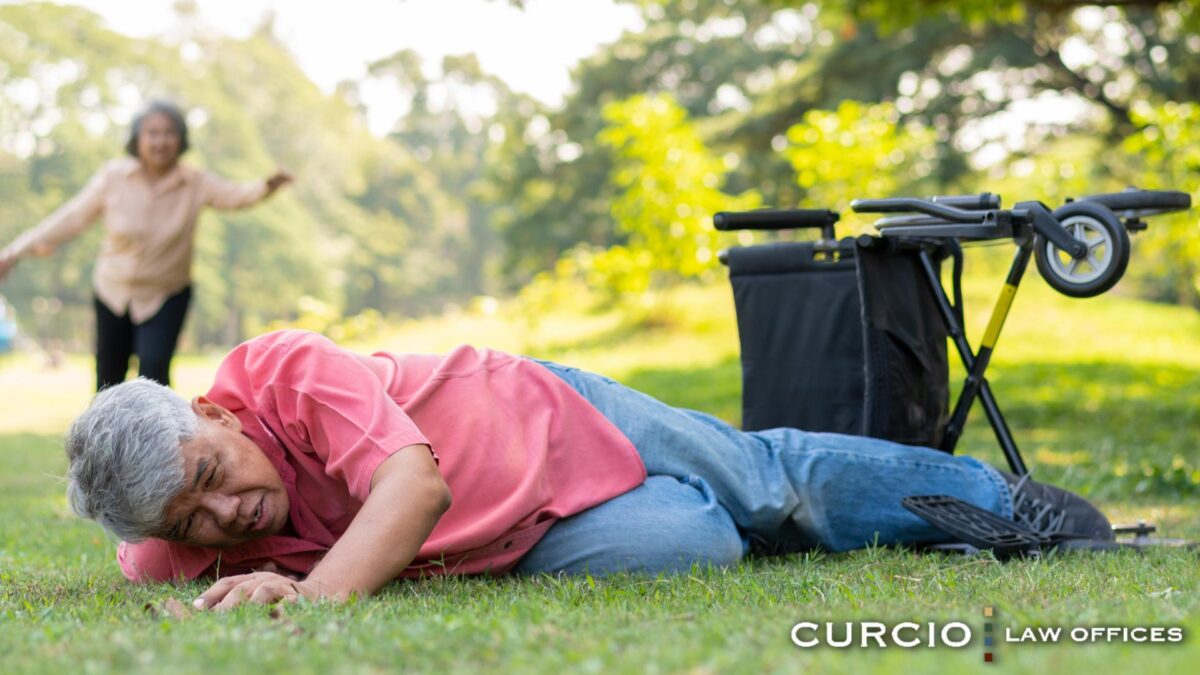
What Does a Fall Risk Assessment Include?
Many medical professionals use the fall risk assessment tools the CDC implemented with their STEADI initiative. The fall risk assessment may involve several steps. During this time, your healthcare provider will screen you (the tests), assess you, and then intervene. The intervention will include fall prevention recommendations to lower your risk of falling.
Symptoms, Medications, and Medical History
During your fall risk screening, your healthcare provider may ask you questions regarding your lifestyle, medications, etc., as many can lead to poor balance and other fall risk factors. To learn more about your medical history, medications, and symptoms, your doctor may:
- Ask you to provide details on your past falls, like what caused the fall, what happened afterward, and whether or not you received medical attention afterwards.
- Discuss your level of physical activity and your ability to perform everyday tasks.
- Review your medications and see if any may increase your risk for falls.
Medical Tests and Follow-Up Care
In addition to learning about your medical history, medications, and fall-risk symptoms, your doctor may also perform the following tests and evaluations:
- Check for heart palpitations and your blood pressure.
- Order lab tests to evaluate vitamin levels
- Request a DEXA, which is a bone density scan, to check for osteoporosis.
- Perform a physical exam.
- Refer you to an occupational therapist to identify risk factors at home that can potentially lead to falling.
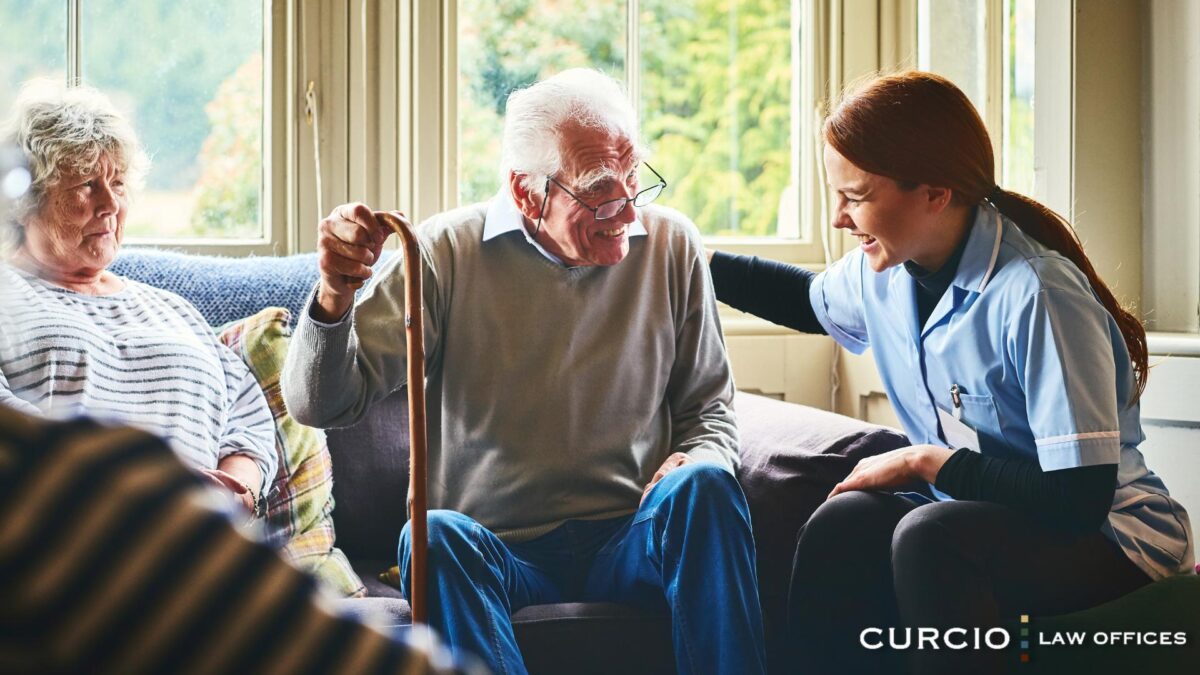
Fall Risk Assessment Tests
During a fall risk assessment, your healthcare provider will perform the following strength, gait, and balance assessment tests.
- 30-Second Chair Stand Test: This falls risk assessment tool measures a person’s balance and strength. During this test, you will sit in a chair with arms crossed in order to avoid using them for support. Then, your healthcare provider will count the number of times you can stand up and sit down for 30 seconds. The lower your number is, the higher your risk of falling is. The number and level of risk will depend on your age.
- Timed Up and Go (TUG): This risk assessment tool measures a person’s gait. First, you will sit in a chair, stand, and walk 10 feet at your average pace. Then you’ll sit down again. During this time, your doctor will time how long it takes for you to perform this test. If it takes you longer than 12 seconds, you have a high risk of falling.
- Four-Stage Balance Test: During this balanced assessment, you’ll stand in four different positions and hold each one for 10 seconds. Each stage will be a more difficult position.
- 1st Position: Stand with feet side by side.
- 2nd Position: Move one foot partially forward so the instep is touching your big toe on your other foot.
- 3rd Position: Move one foot completely in front of the other one so the toes are touching the heel of the other foot.
- 4th Position: Stand on one foot.
- Cognitive Tests: This fall risk assessment tool may not always be included. It’s up to your healthcare provider whether they perform cognitive tests to measure a patient’s fall risk. These tests will determine if a person has difficulty thinking, which can be a fall risk factor.
Ways to Decrease Patient Fall Risk
Now that your doctor has identified risk factors that can increase your falls risk, they may recommend the following prevention strategies:
- Purchase a mobility device like a cane or walker tailored to your height.
- When standing up, move slowly to avoid becoming dizzy.
- If you have a vitamin D deficiency, they may ask you to take supplements.
- Install grab bars and other assistive devices in your home.
- Change medications to ones that decrease your risk of falling.
- Enroll in group exercise classes that are catered toward older adults.
Can You Sue for Nursing Home Falls?
Yes, you can sue for nursing home falls when another’s negligent actions caused the fall. For example, you can sue that facility if the nursing home failed to provide proper fall prevention measures, like grab bars, which led to the fall. You can also pursue legal action if the nursing home failed to perform a falls risk assessment screening test to evaluate the patient’s fall risk, which led to them falling.
Following your loved one’s fall, it’s important to keep documentation regarding their injuries. Documentation from the doctor, including medical records proving that the fall could have been prevented, is critical to your case.
Your nursing home abuse and neglect attorney will collect their own evidence to help build a stronger case. In addition to asking for medical records, they may collect photos of the scene and injuries and interview eyewitnesses.
Damages for Nursing Home Falls
Your loved one could be entitled to the following damages from the nursing home falls lawsuit:
- Medical bills
- Physical therapy bills
- Expenses associated with necessary medical equipment
- Physical pain and suffering
- Emotional distress
- Disability, scarring, or disfigurement from the fall
- And more
If your loved one’s fall resulted in death, you could pursue a wrongful death lawsuit against the nursing home.
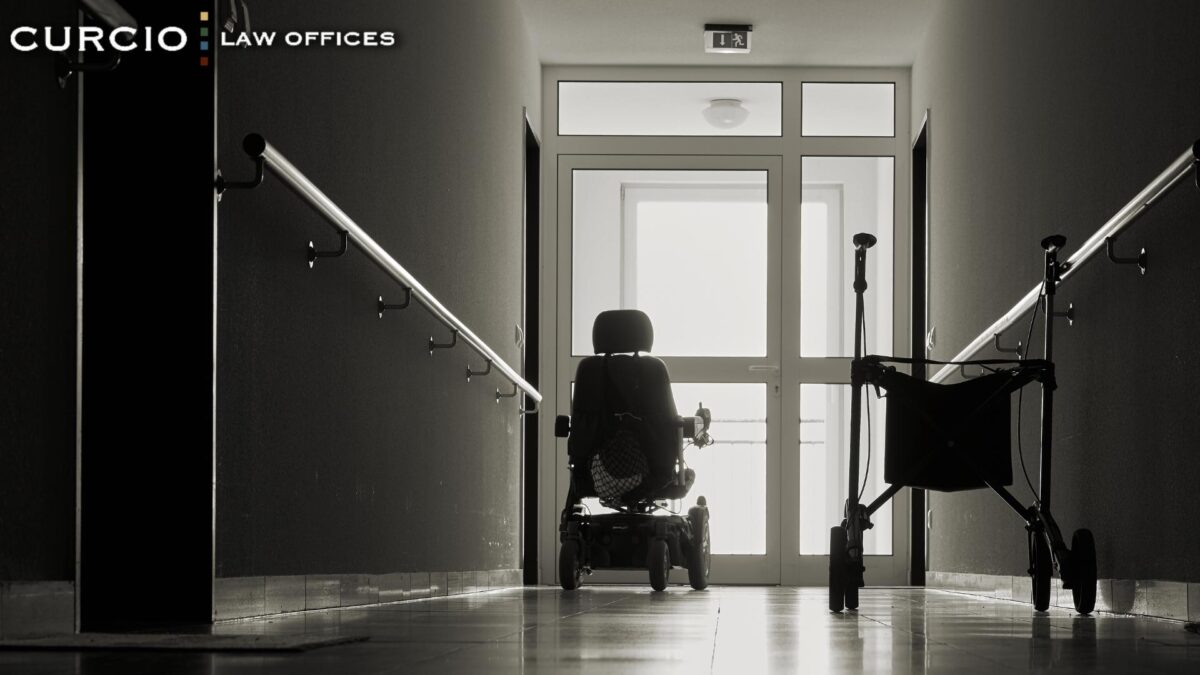
Call Chicago Nursing Home Fall Lawyers at Curcio & Casciato Today
When your elderly loved one falls in a nursing home that you entrusted with their care, it can be devastating. Unfortunately, when an older person falls, it can cause severe and life-altering injuries. If the fall was due to negligent care, you could pursue legal action for financial compensation for damages.
Call Chicago nursing home abuse and neglect attorneys at Curcio Law if your loved one was injured in a fall due to negligence. To schedule a free initial consultation, call 312-321-1111 today.
